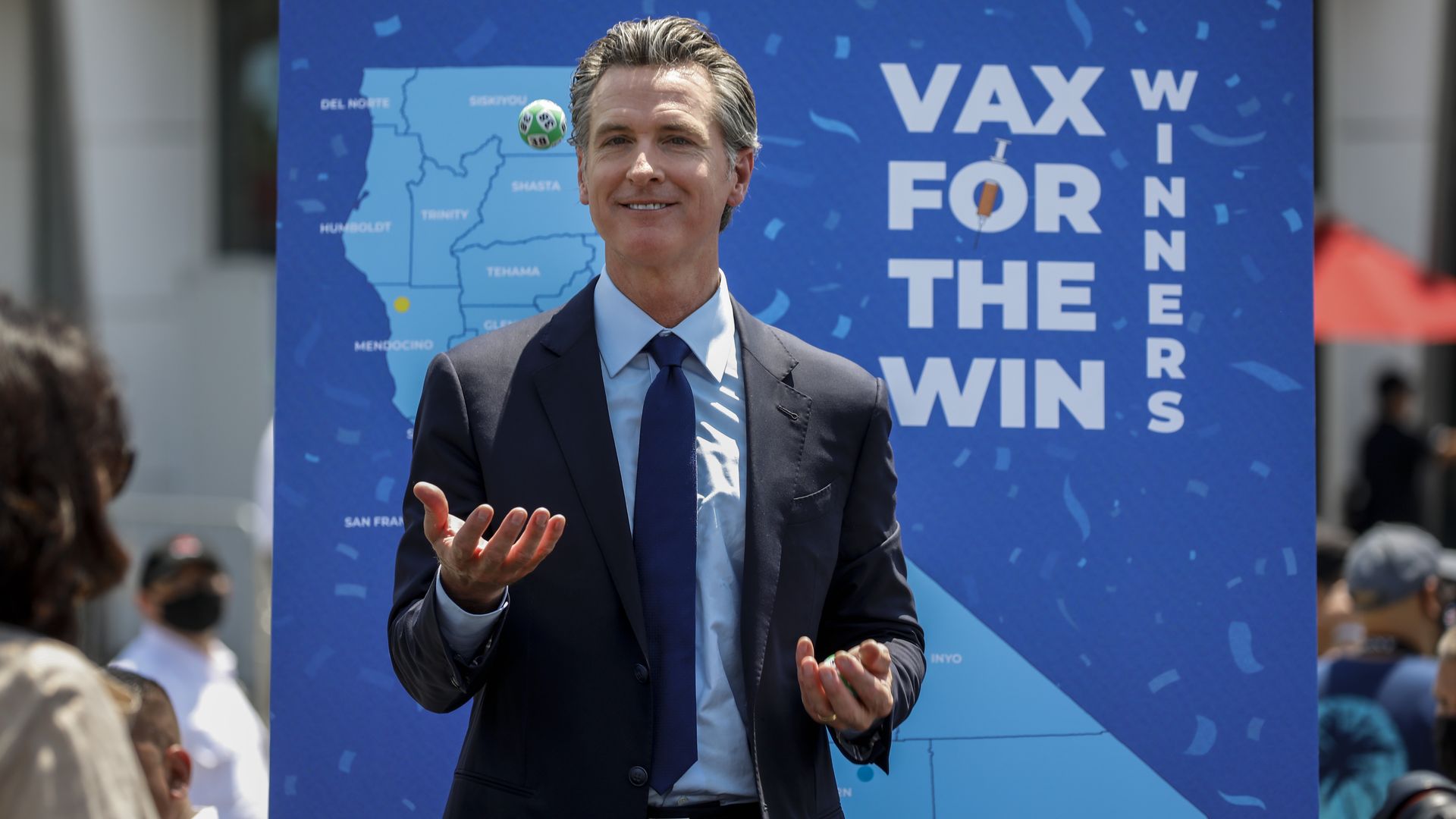
California Gov. Gavin Newsom at a drawing for the state's Vax for the Win program in June. Photo: Jay L. Clendenin / Los Angeles Times via Getty Images
None of the 19 states that implemented statewide COVID-19 vaccine lotteries this summer saw an increase in vaccination rates as a result of the incentive programs, according to a study published Friday in Jama Health Forum.
Why it matters: The study is the first to examine the effectiveness of 19 state-run lotteries, and offers insight into how governments can better craft incentive-based policies, said Andrew Friedson, one of the study's authors and an associate professor of economics at the University of Colorado Denver.
What they found: Researchers examined vaccination rates in 19 states before and after their lottery announcements and concluded that the association between the two variables was "statistically indistinguishable from zero," the study noted.
- Compared with states that didn't have vaccine lotteries, the study found that there was essentially "zero difference" in the vaccination rates of states that held vaccine lotteries and those that didn't, Friedson said in a news release.
What they're saying: “[O]ur research points to a disappointing outcome—that is, there was no significant association found between a cash-drawing announcement and the number of vaccinations administered after the announcement date," according to Friedson.
- “This shows a clear need to reassess how we are encouraging individuals to receive the COVID-19 vaccine," he said.
Of note: The study's findings contradict the early claims of some state officials, who said the lotteries had increased vaccination rates.
- New York state officials, for example, said that the incentive programs had "pushed more New Yorkers to pull up their sleeve."
- Just days after launching the "Vax-a-Million" program, Ohio Gov. Mike DeWine (R) said the campaign had boosted vaccinations across multiple age groups. Researchers later pointed out that the launch of the program coincided with the state opening up vaccinations for younger Americans.
